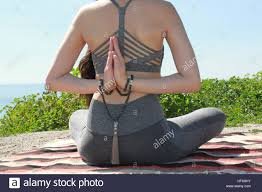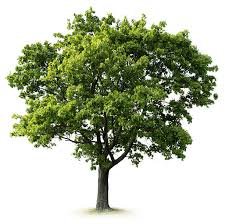Ever wonder what those hippies mean by chakras? Ever wonder if yoga has any deeper purpose than pure physical exercise? Well you came to the right internet page, because we’re gonna flesh out all the hippity dippity nonsense your friend Summer’s been spouting out since she ate her first kale leaf.
We’ll begin with Yoga

So what is yoga?
Yoga, in it’s purest nomenclature, is a sanskrit term meaning to yoke, or to make whole.
Beyond the typical western attitude towards it, yoga actually involves much more than simple body stretches. There’s an entire underlying philosophy that lays out the groundwork for not just physical exercise, but an entire state of being.

The beginnings of yoga are still difficult to pin an exact date, but many agree that the practice was first mentioned in text around 1700-1100 BCE in the Rig Veda, the first of many ancient Hindu hymnal texts. These hymns intended to make the human soul one with a divine presence, attempting to transcend the ever-shifting physical world to gain consciousness of a more constant and observant spiritual state. These meditations were achieved through chants and mantras (repetitive chanting), and no physical exercise was involved.
The early Upanishads and the Bhagavad Gita (Song of God) are both believed to be texts that rose from this desire to transcend into a more mystical state of being. Both texts focus on the practice of discovering oneness between the mind and conscious action, setting out a more solid foundation for how one should live their life more consciously. The Upanishads were also the first texts to describe the body using traditional yogic anatomy, introducing the subtle body as a concept in written form for the first time.
The sage Patanjali (there’s still some debate as to whether he was a single person or a group of sages) studied ancient Hindu texts such as the Vedas, the Bhagavad Gita, and the early Upanishads around 400 CE and produced the Yoga Sutras, which is pretty much an accessible system of personal yogic development.
All of the earlier texts kind of laid out an idea of how to yoga correctly, but they weren’t organized all that well and they weren’t focused solely on the practice of yoga, so Patanjali figured he’d clear that right up with his own texts, thereby creating the Yoga Sutras, the writings on which the majority of modern yoga is based.
Although some of the advice and rationalizations are fairly outdated for most modern practitioners, which I’ll speak on in another post, the eight branches of a yogic practice that Patanjali develops still stand as strong guidance points for a student’s life, even if some tweaking may be necessary to fit the current world.
The Eight Branches of Yoga

1/ Yama
Yama is our attitude towards our environment, it’s composed of six key practices:
Ahimsa:
Consideration for all living things, most notably the innocent and helplessSatya:
Truthful speech in all manners of communicationAsteya:
Noncovetousness, resisting the desire for what we haven’t earned or paid forBrahmacharya:
This portion of yama encourages a life of celibacy for the sake of restraining desire. Most modern yogis have preferred to interpret it as moderation in our desires, balancing our feelings and thoughts and moving them towards higher realization. This one’s still controversial, though.Aparigraha:
Nongreediness, accepting only what is appropriate
2/ Niyama
Niyama is our attitude towards ourselves, it’s composed of:
Saucha:
Keeping our bodies and surroundings clean and tidySantosa:
Contentment with who we are and what we do and don’t haveTapas:
The removal of impurities through the practice of sleep, exercise, nutrition, work, and relaxation.Svadhyaya:
Intentional self-awareness in our actions, staying centered in our own truthIshvarapranidhana:
Reverence to a higher intelligence or the acceptance of our limitations in relation to whatever all-knowing being we prefer. (Patanjali referred this with more of a religious connotation, but we’ll go into the possible relationships or lack thereof between yoga and spirituality in a later blog. Altogether, this is purely a personal practice and none of these suggestions are mandatory.)
3/ Asana
The practice of physical stretches and exercises to clear the mind for meditation (Basic physical Hatha yoga)
4/ Pranayama
The practice of breathing exercises, control of the breath
5/ Pratyahara
Restraint of the senses, relieving the senses of external distractions
6/ Dharana
The ability to direct our minds
7/ Dhyana
The ability to develop interactions with what we seek to understand
8/ Samadhi
Bliss, complete integration with the object to be understood
Now, these are just the basics in terms of what’s to be understood about each of these branches. Every branch has its own overarching meanings and purposes in a pure yoga practice, and because of that I’ll dedicate a whole post to each branch as we move on through this summer.
This was just a basic little tidbit to show the vast set of ideas that yoga has thrust into the world. We’ll speak in more opinionated terms a little later, because I do have my own differing and critical opinions in regards to certain Patanjalical (is that a word? If not I just made it one) teachings.
Questions? Comments? Concerns?
Let me know, I’d love to hear some feedback!
Namaste //

Wonderful in depth article! Really well written and fun to read! Thank you so so much for putting this together and sharing it with us!
Of course! I'm glad you enjoyed it :)
If I tried the exercise shown in the first photo, I would have to be rushed to the hospital. LOL
Oh yes. Beautiful work. Brahmacharya. Containing the life energy. I love BKS Iyengar's book Light on Life. Know it? Really inspiring. Paraphrasing:
Definitely, Iyengar's one of my biggest inspirations for pursuing yoga. I wold have loved to meet him, he had such an amazing energy in his interviews and his writings :)
Wow. Hadn't even thought about the idea of meeting him. Fortunately we get to know him through his writing. I look forward to your posts.
Congratulations @empten! You have completed some achievement on Steemit and have been rewarded with new badge(s) :
Click on any badge to view your own Board of Honnor on SteemitBoard.
For more information about SteemitBoard, click here
If you no longer want to receive notifications, reply to this comment with the word
STOPBy upvoting this notification, you can help all Steemit users. Learn how here!